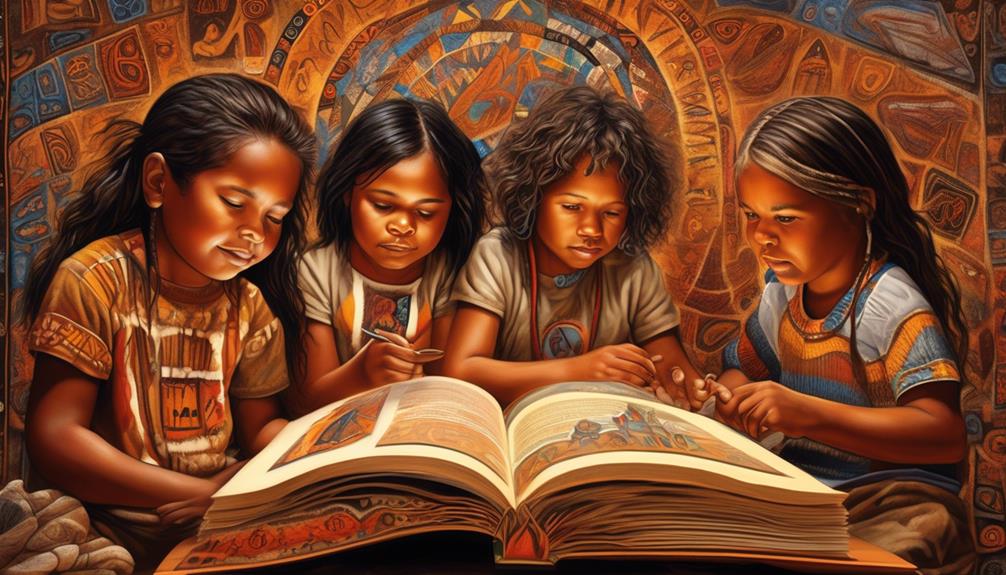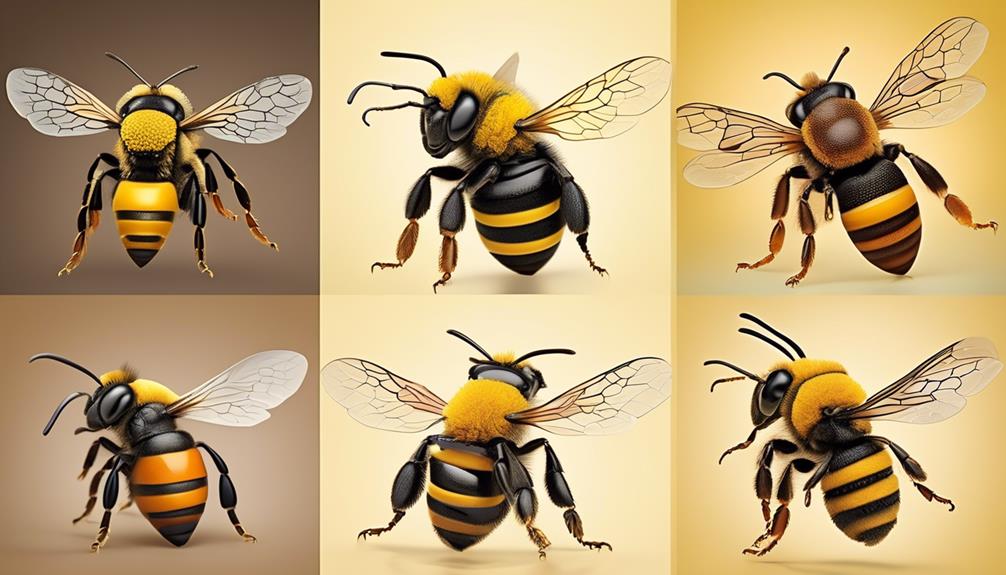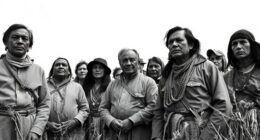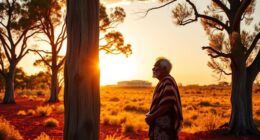When considering the history of Australia, we often celebrate its vibrant culture and beautiful landscapes, but there is also a more somber narrative that requires our attention.
What happened to the Aboriginal Australians? The juxtaposition of the modern Australian identity against the historical treatment of its indigenous people unveils a complex and often painful story.
From the early contact and colonization to the impact of assimilation policies, the journey of the Aboriginal Australians is one marked by resilience and struggle.
But what were the lasting effects of these events? And how are contemporary efforts shaping the future for this ancient culture?
Key Takeaways
- European settlers disrupted traditional Aboriginal hunting and gathering practices, leading to social and cultural upheaval.
- Assimilation policies, including the forced removal of Aboriginal children, resulted in cultural erosion and trauma, leading to a loss of cultural identity.
- Indigenous peoples were systematically removed from their ancestral lands, leading to physical displacement and cultural loss.
- Aboriginal communities face health and socioeconomic challenges, including limited healthcare access, higher rates of chronic illnesses, and educational and employment barriers.
Early Contact and Colonization
As European settlers began arriving in Australia in the late 18th century, significant changes were set in motion for the Indigenous Aboriginal population. The impact of colonization on the traditional customs and cultural resistance of the Aboriginal people was profound. The arrival of the Europeans brought about a fundamental shift in the way of life for the Aboriginal communities.
Traditional hunting and gathering practices were disrupted as the settlers encroached on their lands, leading to a loss of access to essential resources and sacred sites. This forced many Aboriginal groups to adapt their lifestyle, often resulting in significant social and cultural upheaval.
Cultural resistance became a crucial means of preserving their identity and heritage in the face of these challenges. The Aboriginal people employed various forms of resistance, including maintaining their languages, storytelling, art, and ceremonies. These cultural practices served as a way to assert their presence and resilience in the wake of colonization.
Despite the immense pressures and injustices they faced, the Aboriginal communities demonstrated remarkable strength and determination in safeguarding their traditional customs. Understanding this historical context is essential in recognizing the ongoing struggles and triumphs of the Aboriginal Australians.
Impact of Assimilation Policies

The assimilation policies implemented by the Australian government had a profound and lasting impact on the Aboriginal communities, shaping their social dynamics, cultural practices, and sense of identity. These policies were aimed at integrating Aboriginal people into the broader Australian society, but they often resulted in cultural erosion and significant harm to the Aboriginal way of life.
The forced removal of Aboriginal children from their families, known as the Stolen Generations, is a stark example of the devastating effects of assimilation policies. This practice not only caused immense trauma and suffering but also disrupted the transmission of cultural knowledge and traditions from one generation to the next, further contributing to cultural erosion within Aboriginal communities.
Moreover, the assimilation policies led to the breakdown of traditional kinship systems and social structures, causing disconnection and disempowerment within Aboriginal communities. As a result, many Aboriginal people experienced a profound loss of cultural identity and struggled to maintain their cultural practices in the face of government-led assimilation efforts.
The long-term repercussions of these policies continue to impact Aboriginal communities today, highlighting the need for ongoing support and efforts to preserve and revitalize Aboriginal cultures and traditions.
Land Dispossession and Displacement
Experiencing the traumatic legacy of assimilation policies, Aboriginal communities faced further upheaval with the encroachment of land dispossession and displacement. The systematic removal of Indigenous peoples from their ancestral lands not only led to physical displacement but also caused profound cultural loss and erasure. This deliberate act of dispossession was rooted in discriminatory beliefs that perpetuated the marginalization of Aboriginal Australians. As a result, many communities were forced to relocate to unfamiliar territories, disrupting their traditional ways of life and severing deep spiritual connections to the land.
| Emotional Impact | Consequences | Call to Action |
|---|---|---|
| Loss of identity | Disrupted kinship ties | Support land rights |
| Psychological trauma | Economic instability | Advocate for justice |
| Cultural erosion | Loss of traditional practices | Educate and empower |
Despite these challenges, Aboriginal communities have shown remarkable resilience and resistance in the face of displacement. They continue to assert their rights to land and cultural heritage, striving to preserve their identity and traditions. By acknowledging the ongoing repercussions of land dispossession and discrimination, we can work towards supporting their quest for justice and healing.
Health and Socioeconomic Challenges
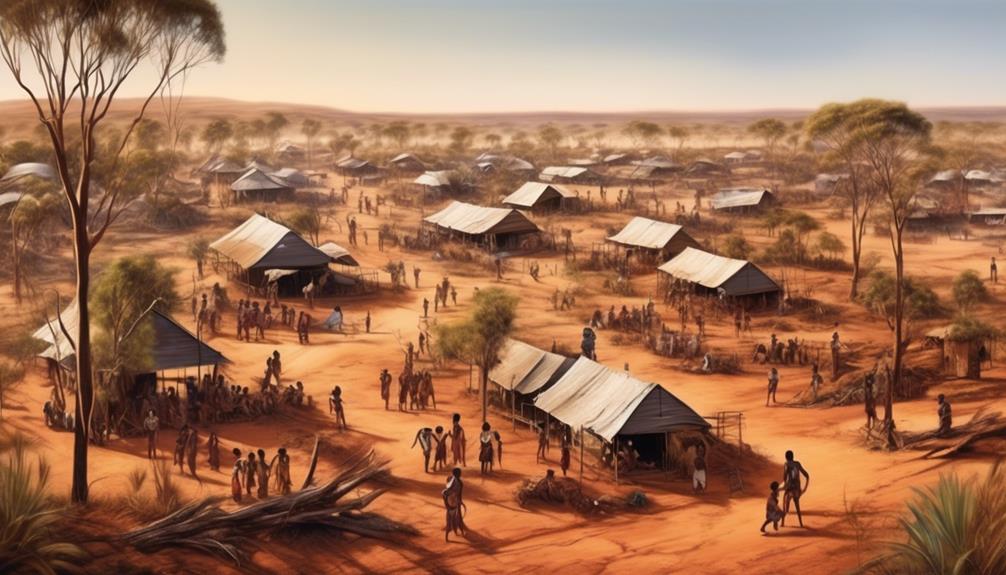
Facing significant disparities in healthcare access and socioeconomic opportunities, Aboriginal communities grapple with multifaceted challenges that impact their well-being and overall quality of life. Socioeconomic disparities, historical injustices, and systemic barriers contribute to the complex health and social issues faced by Aboriginal Australians.
- Limited Healthcare Access: Many Aboriginal communities reside in remote areas with limited access to healthcare facilities, leading to difficulties in receiving timely and adequate medical attention.
- Higher Rates of Chronic Illnesses: Socioeconomic disparities contribute to higher rates of chronic illnesses such as diabetes, cardiovascular diseases, and mental health conditions within Aboriginal populations, further exacerbated by inadequate access to healthcare services.
- Educational and Employment Barriers: Socioeconomic disparities manifest in lower levels of education and employment opportunities for Aboriginal Australians, impacting their overall socio-economic well-being and perpetuating cycles of poverty and health inequities.
Addressing these challenges requires a comprehensive approach that involves improving healthcare infrastructure in remote areas, addressing systemic inequalities, and providing culturally sensitive healthcare services to bridge the gap in healthcare access and socioeconomic opportunities for Aboriginal communities.
Contemporary Efforts for Reconciliation
In contemporary Australia, efforts for reconciliation between Aboriginal and non-Aboriginal communities have gained momentum, reflecting a growing commitment to acknowledging and addressing historical injustices. Various initiatives have been implemented to foster progress in this area.
Efforts such as the National Apology in 2008, which recognized the past mistreatment of Aboriginal peoples, marked a significant step towards reconciliation. Additionally, the establishment of Reconciliation Action Plans (RAPs) by organizations across the country demonstrates a proactive approach to driving meaningful change. These plans outline practical steps for promoting greater understanding, respect, and opportunities for Aboriginal and Torres Strait Islander peoples.
Moreover, educational programs and cultural awareness training have been instrumental in challenging stereotypes and fostering empathy. Looking ahead, future initiatives aim to further strengthen relationships and create more inclusive environments. This includes ongoing dialogue and collaboration between Indigenous and non-Indigenous communities, as well as the continued development of policies that address systemic issues.
Frequently Asked Questions
What Traditional Healing Practices and Cultural Traditions Have Been Preserved and Passed Down Through Generations Despite the Impact of Colonization?
We've observed that traditional healing practices and cultural traditions have endured through storytelling and oral traditions despite colonization's impact. The passing down of knowledge from elders has been instrumental in preserving these essential aspects of our culture.
These practices continue to be central to our identity and well-being, providing us with a sense of connection to our ancestors and the land. It's a testament to the resilience and strength of our community.
How Have Aboriginal Australians Utilized Storytelling and Oral Traditions to Preserve Their History and Culture in the Face of Assimilation Policies?
Storytelling preservation has been crucial for Aboriginal Australians in preserving their history and culture.
Through oral traditions, they've passed down healing traditions and resisted assimilation policies.
Despite education disparities, they reclaim their land and empower the youth.
This has been instrumental in maintaining their cultural identity and resilience.
Such practices serve as a testament to the strength and determination of the Aboriginal Australian community in the face of historical challenges.
What Specific Challenges Do Aboriginal Australians Face in Accessing Healthcare and Education, and What Efforts Are Being Made to Address These Disparities?
We're facing healthcare disparities like a ship navigating treacherous waters.
Aboriginal Australians encounter challenges accessing quality healthcare and education due to geographic isolation, cultural barriers, and lack of resources.
Efforts are underway to address these disparities, including culturally sensitive healthcare services, community-based education programs, and initiatives to recruit and support Indigenous healthcare and education professionals.
These efforts strive to bridge the gap and ensure equitable access to essential services for Aboriginal Australians.
How Have Aboriginal Australians Been Able to Reclaim and Protect Their Ancestral Lands in the Face of Ongoing Challenges and Threats to Their Sovereignty?
We've seen that Aboriginal Australians have faced significant challenges in reclaiming and protecting their ancestral lands, especially in the face of ongoing sovereignty threats.
The impact of colonization has had a profound effect on their ability to preserve their cultural heritage and connection to the land.
However, through resilience and advocacy, Aboriginal communities have been actively working to assert their rights and maintain their cultural identity in the face of these challenges.
What Role Do Aboriginal Australian Youth Play in Contemporary Efforts for Reconciliation, and How Are They Being Empowered to Shape Their Own Future Within Their Communities?
We believe that Aboriginal Australian youth play a vital role in community reconciliation and cultural preservation.
Through youth empowerment, they're being equipped with the tools to shape their own future within their communities.
By engaging in healing practices and embracing their cultural heritage, they're actively contributing to the ongoing efforts for reconciliation.
This empowerment not only benefits the youth but also enriches the entire community, fostering a sense of pride and unity.
Conclusion
In conclusion, the history of the Aboriginal Australians is a tragic tale of early contact and colonization. The impact of assimilation policies, land dispossession, and displacement has been devastating. These challenges have contributed to ongoing health and socioeconomic struggles.
Despite these hardships, there are contemporary efforts for reconciliation and healing. There is hope for a brighter future. The resilience and strength of the Aboriginal Australians continue to inspire hope. Like a phoenix rising from the ashes, they are determined to overcome the struggles of their past and create a better future for themselves and their communities.


